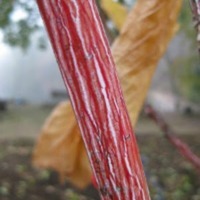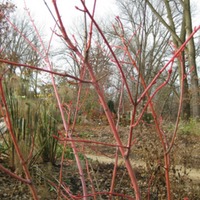Striped Maple : Cultural uses
Various Native American tribes used this tree for medicinal purposes. The Micmac tribe of northern Quebec used its bark to aid with respiratory problems such as colds, coughs, and the flu, while the wood was used to help cure kidney trouble, spitting up of blood, and gonorrhea. Another tribe, the Chippewa of Minnesota, used a tea made from the inner bark as an emetic. The Penobscot people of Maine made the bark into a poultice to decrease swelling and, like the Micmac, the Abenaki used the tree to aid with bronchial troubles. Finally, the Iroquois created a mixture of plants, including the striped maple, which was used as a laxative.
Another more traditional use is noted by yet another of this maple’s common names: whistlewood. Because of the light, soft wood, it is quite easy to carve out a whistle from the smaller branches.
The striped maple is also an important food source for many animals. In the 18th century, the colonists were known to feed the dried leaves to cattle during the winter and to turn the cattle loose to browse on the buds in the spring. To some extent, ruffed grouse eat the seeds, and in the winter the bark serves as fodder for deer, beavers, rabbits, porcupines, and moose, leading to what is perhaps the striped maple’s most well-known common name: moosewood.



